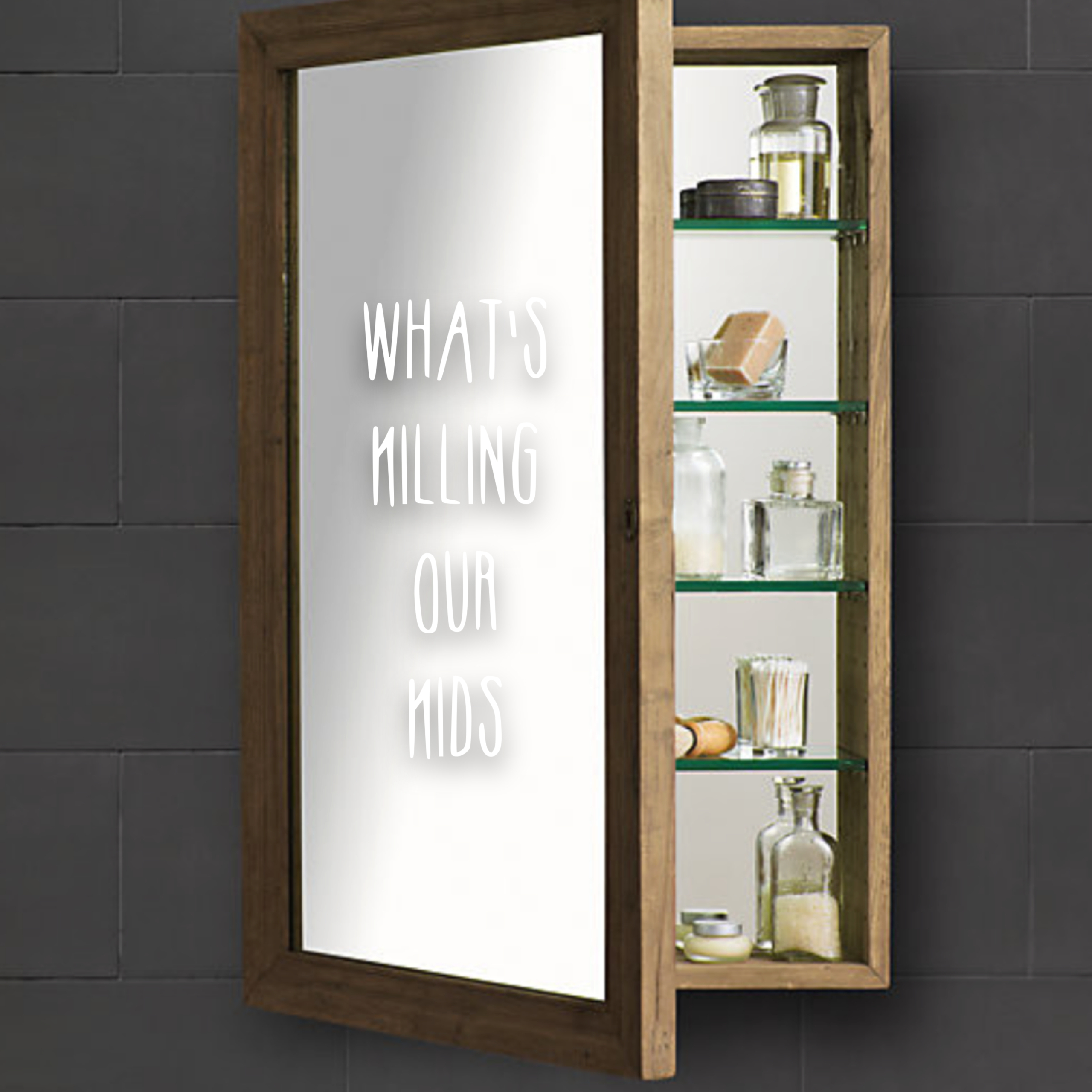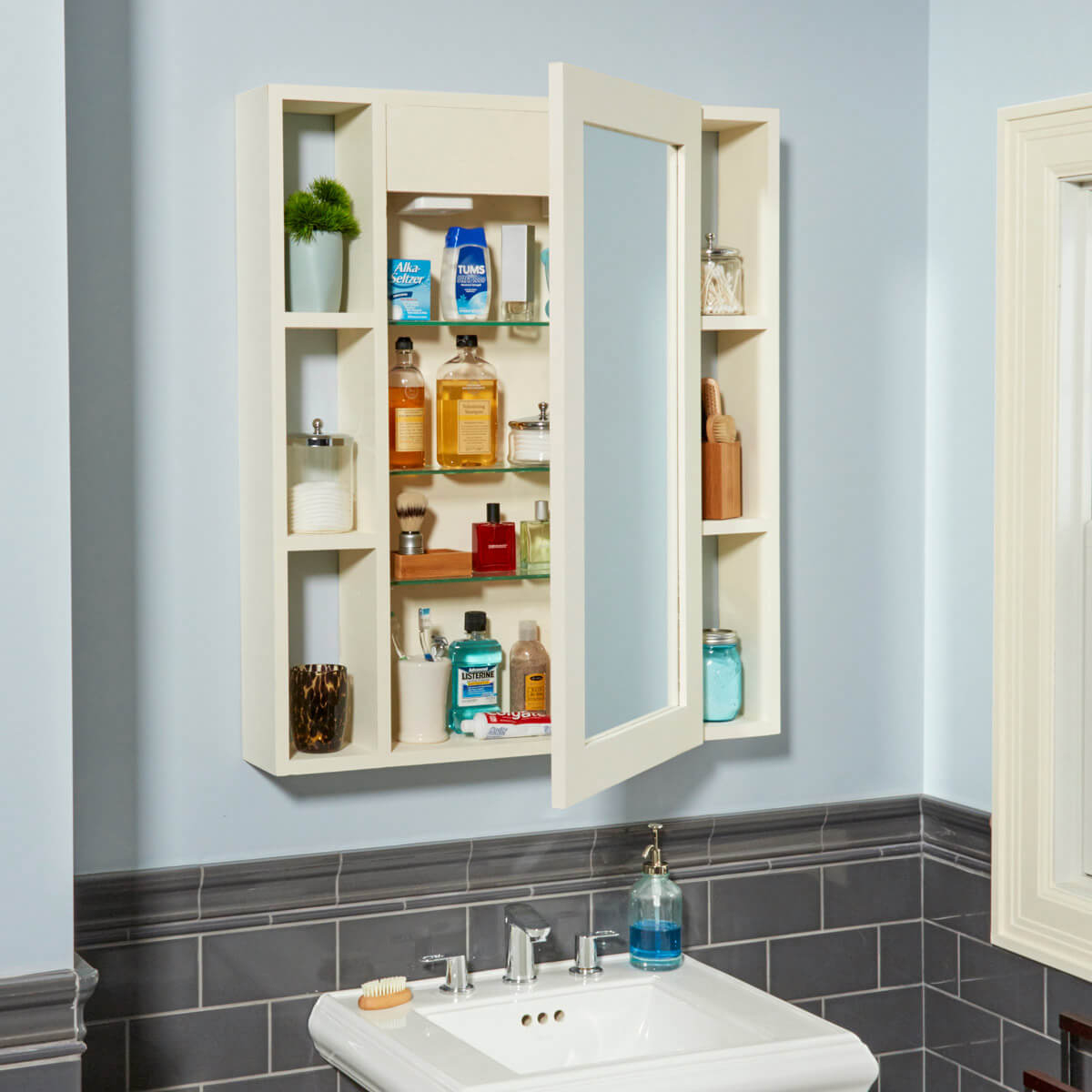DIY Concealed Medicine Cabinet Design and Planning

A well-designed concealed medicine cabinet is more than just a storage solution; it’s an essential part of your bathroom’s functionality and aesthetics. Careful planning ensures your cabinet seamlessly blends with your existing decor while providing secure and accessible storage for your medications and toiletries.
Location Selection and Size Considerations
The location of your concealed medicine cabinet is crucial for ease of access and visual appeal. Consider the following factors:
- Proximity to the Sink: Placing the cabinet near the sink ensures convenient access to medications and toiletries while washing your hands.
- Mirror Placement: If your cabinet incorporates a mirror, ensure it’s positioned at a height that allows for comfortable viewing.
- Existing Electrical Outlets: If your design includes lighting, check for nearby electrical outlets to simplify wiring.
- Cabinet Size: Determine the optimal size based on your storage needs and available space. A larger cabinet can accommodate more items, but it might be visually overpowering in a small bathroom.
Material Selection
Choosing the right materials is essential for both aesthetics and durability.
- Cabinet Frame: Consider using moisture-resistant materials like plywood, MDF, or solid wood for the cabinet frame.
- Cabinet Doors: For a seamless look, choose doors that match the existing cabinetry in your bathroom. Popular options include mirrored doors, solid wood doors, or laminate doors.
- Shelves and Drawers: Use durable materials like tempered glass or sturdy plastic for shelves and drawers to ensure they can withstand the weight of your medications and toiletries.
Design Plan Creation
Creating a detailed design plan is crucial for a successful project.
- Measurements: Take precise measurements of the designated space for your cabinet, including height, width, and depth.
- Material Selection: Decide on the materials you will use for the frame, doors, shelves, and drawers.
- Functionality: Determine the specific features you want in your cabinet, such as adjustable shelves, built-in lighting, or a pull-out drawer for easy access.
- Drawings and Sketches: Create detailed drawings or sketches of your design to visualize the final product and ensure all components fit together properly.
Types of Concealed Medicine Cabinets
There are several types of concealed medicine cabinets available, each with its own advantages and disadvantages.
- Mirror Cabinets: These cabinets are designed to look like a standard bathroom mirror, seamlessly blending into the decor. They often have a hidden door that reveals storage space behind the mirror.
- Wall-Mounted Cabinets: These cabinets are mounted directly to the wall, offering a simple and versatile solution. They come in various sizes and styles to match different bathroom designs.
- Custom-Built Cabinets: These cabinets are designed and built specifically to meet your unique requirements. They offer maximum customization in terms of size, features, and materials.
Comparison Table
The following table provides a comprehensive comparison of the different types of concealed medicine cabinets, highlighting their features, installation methods, and costs:
| Type | Features | Installation Method | Cost |
|---|---|---|---|
| Mirror Cabinet | Blends seamlessly with decor, hidden storage behind mirror | Wall-mounted, may require specialized installation | Moderate to High |
| Wall-Mounted Cabinet | Versatile, available in various sizes and styles | Wall-mounted, typically easy to install | Low to Moderate |
| Custom-Built Cabinet | Highly customizable, tailored to your specific needs | Requires professional installation | High |
Building and Installing a DIY Concealed Medicine Cabinet

Creating a concealed medicine cabinet is a rewarding project that adds functionality and a touch of elegance to your bathroom. This guide provides detailed instructions for building and installing a custom-designed medicine cabinet that seamlessly blends with your existing décor.
Essential Tools and Materials
The materials and tools required for this project depend on the size and design of your cabinet. However, a general list includes:
- Wood: Plywood, MDF, or solid wood are suitable for cabinet construction. Choose a material that matches your aesthetic and budget.
- Hinges: Select hinges that are durable and suitable for the weight of the cabinet door. Concealed hinges provide a clean, integrated look.
- Hardware: This includes cabinet knobs or pulls, shelf supports, and magnetic catches for securing the door.
- Finishing Materials: Primer, paint, stain, or varnish are needed to protect and enhance the cabinet’s appearance.
- Measuring Tape, Level, and Pencil: These tools are essential for precise measurements and marking.
- Saw: A circular saw or jigsaw is necessary for cutting the wood pieces to size.
- Drill: A cordless drill with appropriate bits is used for drilling pilot holes and attaching hardware.
- Screwdriver: A Phillips-head screwdriver is needed for securing screws.
- Sandpaper: Sandpaper of various grits is used for smoothing edges and preparing surfaces for finishing.
- Safety Gear: Wear safety glasses, gloves, and a dust mask to protect yourself during the construction process.
Constructing the Cabinet Structure, Diy concealed medicine cabinet
- Design and Measurements: Plan the size and layout of your cabinet. Consider the available space, desired storage capacity, and desired aesthetic.
- Cutting the Wood: Cut the wood pieces to size using a saw, ensuring precise measurements for a seamless fit.
- Assembling the Cabinet: Join the wood pieces using glue and screws to create the cabinet frame.
- Installing Shelves: Attach shelves to the cabinet frame, considering the weight of items you plan to store.
- Adding the Door: Attach hinges to the cabinet frame and the door, ensuring proper alignment and smooth operation.
- Installing Hardware: Attach cabinet knobs or pulls, shelf supports, and magnetic catches.
Finishing the Cabinet
- Sanding: Smooth out any rough edges and prepare the surface for finishing.
- Priming: Apply a primer to create a uniform surface and enhance paint adhesion.
- Painting or Staining: Choose a finish that complements your bathroom décor. Paint, stain, or varnish the cabinet to protect and enhance its appearance.
Installing the Cabinet
- Choosing the Location: Select a location that is convenient, accessible, and visually appealing.
- Marking the Wall: Use a level to mark the desired location for the cabinet on the wall.
- Drilling Pilot Holes: Drill pilot holes into the wall using a drill and appropriate bit size.
- Securing the Cabinet: Attach the cabinet to the wall using screws or anchors, ensuring it is securely mounted.
- Testing the Door: Open and close the cabinet door to ensure smooth operation and proper alignment.
Concealing the Cabinet Seamlessly
- Flush Mounting: Install the cabinet flush with the wall for a clean, integrated look.
- Custom Trim: Use custom trim to frame the cabinet and create a seamless transition with the surrounding wall.
- Matching Paint Colors: Paint the cabinet and surrounding wall in the same color for a cohesive and invisible look.
Concealed Medicine Cabinet Functionality and Safety

A well-designed concealed medicine cabinet isn’t just about hiding your medications; it’s about creating a safe and organized space that promotes easy access and efficient management. Proper organization and safety features are paramount to ensuring that your medications are readily available when needed and stored securely, particularly for families with children.
Organization and Storage Solutions
Effective organization is key to maximizing space and ensuring easy access to medications and first-aid supplies. Here are some tips for optimizing your concealed medicine cabinet:
- Categorize and Label: Group medications by type (prescription, over-the-counter, topical) and use clear labels to identify each category. This allows for quick and easy identification of the needed medication.
- Utilize Storage Solutions: Employ adjustable shelves, drawers, and dividers to create distinct compartments for different medication types and first-aid supplies. This helps to maximize space and prevent items from becoming jumbled.
- Prioritize Expired Medications: Regularly check for expired medications and discard them promptly. This ensures the effectiveness of your medication supply and avoids potential safety hazards.
- Implement a Rotation System: Adopt a first-in, first-out system for medications, ensuring older medications are used before newer ones. This helps prevent stockpiling and ensures you’re using the most effective medications.
Safety Features for Concealed Medicine Cabinets
Safety should be a top priority when designing and using a concealed medicine cabinet. Here are some essential features to consider:
- Child-Proof Locks: Install child-proof locks on the cabinet door to prevent children from accessing medications. These locks provide an extra layer of security, especially for households with young children.
- Adequate Ventilation: Ensure proper ventilation to prevent moisture buildup and mold growth, which can damage medications and create a hazardous environment.
- Proper Lighting: Install a bright and clear light source within the cabinet to facilitate easy viewing and identification of medications.
Innovative Storage Solutions for Small Spaces
Maximizing storage space in a concealed medicine cabinet, especially in smaller bathrooms, is crucial. Here are some innovative solutions:
- Adjustable Shelves: Utilize adjustable shelves to create customized compartments that accommodate different medication sizes and first-aid supplies. This allows for efficient use of vertical space and flexible storage arrangements.
- Pull-Out Drawers: Install pull-out drawers for easier access to medications and first-aid supplies stored at the back of the cabinet. This eliminates the need to reach deep into the cabinet, making retrieval more convenient and less stressful.
- Dividers: Use dividers to create separate sections within shelves or drawers, allowing for further categorization of medications and supplies. This enhances organization and prevents items from becoming mixed up.
Storage Options for Medications and First-Aid Supplies
The following table Artikels different storage options for various types of medications and first-aid supplies, emphasizing accessibility and safety:
| Medication/Supply Type | Recommended Storage Option | Rationale |
|---|---|---|
| Prescription Medications | Lockable drawers, designated shelves with labels | Ensures secure storage and easy identification |
| Over-the-Counter Medications | Adjustable shelves, clear containers | Allows for convenient access and visual identification |
| Topical Medications | Separate compartments, labeled containers | Prevents contamination and facilitates easy identification |
| First-Aid Supplies | Designated shelves or drawers, clear containers | Promotes easy access in case of emergencies |
| Liquid Medications | Sealed containers, upright storage | Prevents spills and ensures proper dosage |
A DIY concealed medicine cabinet can be a stylish and practical addition to any bathroom, especially if you’re aiming for a sleek, modern look. Pairing your cabinet with a black slate appliances with white cabinets in your kitchen can create a cohesive and sophisticated aesthetic throughout your home.
The clean lines and minimalist design of a concealed medicine cabinet perfectly complement this modern kitchen design trend, providing a seamless and organized storage solution for your bathroom essentials.
A DIY concealed medicine cabinet can be a stylish and practical addition to your bathroom, but don’t forget about your kitchen! Maximize your counter space with a black and decker under cabinet toaster , freeing up valuable real estate for your morning coffee routine.
Just like a well-hidden medicine cabinet, this toaster seamlessly integrates into your kitchen design, offering convenience without sacrificing aesthetics.
